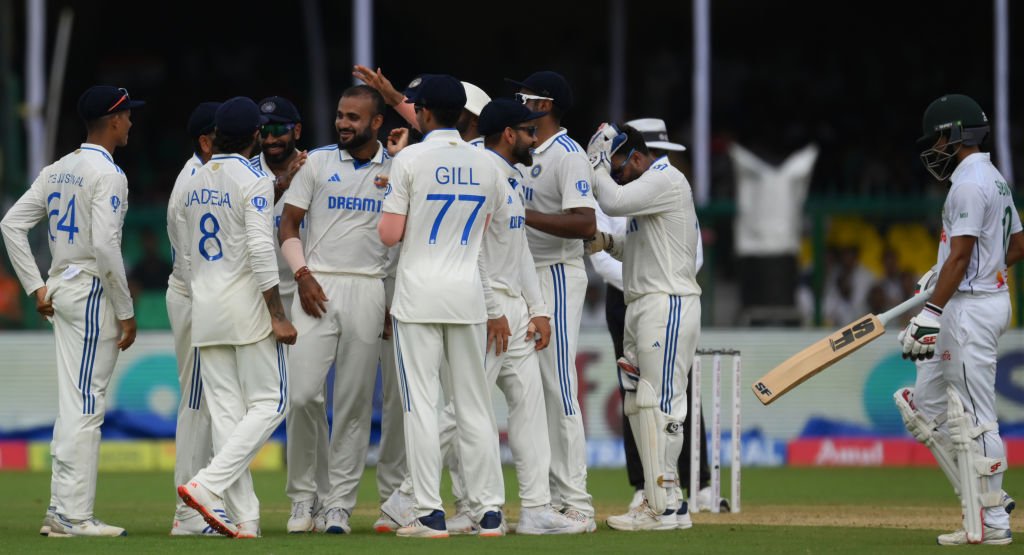
India’s upcoming five-match Test series in Australia marks a return to extended cricket rivalry, with both teams showcasing a blend of veteran resilience and rising talent. The Border-Gavaskar Trophy promises high-stakes action in challenging conditions.
India’s cricket squad is set to face a formidable challenge in Australia, marking the first five-Test series between the two sides since 1991-92. This series is an iconic opportunity for India, as they aim to defend the Border-Gavaskar Trophy in a format that tests endurance, depth, and skill over a grueling stretch of matches. With India’s Test team maintaining top rankings, this tour is more than just a cricket rivalry—it’s a platform for legacy, strategic battles, and sporting pride.
A Balanced Indian Squad: Veterans and Rising Stars
India’s squad for the series is an 18-member mix that balances experienced names with younger players. Rohit Sharma leads the side as captain, alongside seasoned players like Virat Kohli, Jasprit Bumrah, and Ravindra Jadeja. Kohli’s form in Australia has historically been strong, and the squad will look to him for both runs and leadership. Bumrah, known for his deadly pace, will be vital in Australian conditions that offer bounce and carry, alongside Shami, who adds depth to India’s bowling attack. Jadeja’s all-round abilities make him indispensable in varying pitches, where his spin can adapt to suit both pace and turn.
Emerging players such as Yashasvi Jaiswal and Shubman Gill are likely to open the batting and are key for India’s long-term vision in Test cricket. Jaiswal has been impressive, building a reputation for playing fearless cricket, while Gill has become a solid choice for Indian Test openers. With Rishabh Pant likely to reclaim the wicketkeeping role after his recovery, his aggressive batting style can shift momentum in India’s favor, especially in the middle overs when resilience and quick runs are crucial.
Key Series Highlights and Historical Significance
Australia holds the advantage of home turf, but India’s recent success in away series builds their confidence. In the last two series Down Under, India emerged victorious, creating an impressive record. However, the last major face-off between the two teams in England during the World Test Championship final saw Australia claim victory, proving that they’re still a tough opponent in Tests. For both nations, the series is more than just about winning; it’s about gaining a historic upper hand in their storied rivalry.
Australian conditions are notorious for their unique characteristics—fast, bouncy pitches with true bounce, testing both technique and temperament. The series will span five iconic venues: Perth, Adelaide, Brisbane, Melbourne, and Sydney, with each ground offering distinct challenges. Perth’s Optus Stadium, known for pace, will be particularly challenging for openers, while Melbourne’s Boxing Day Test remains a traditional centerpiece, drawing large crowds and intense fanfare.
Australia’s Strategy and Their Squad Composition
Australia, led by captain Pat Cummins, comes with a strong lineup in their own right. The pace trio of Cummins, Mitchell Starc, and Josh Hazlewood is a formidable challenge for any batting lineup, capable of relentless speed and precision. With spinners like Nathan Lyon, Australia has covered all bases to capitalize on home advantage. Key Australian batsmen like Marnus Labuschagne and Steve Smith, who have both thrived in Australian conditions, make up a batting lineup that will test India’s bowlers. Given India’s recent success, Australia is expected to bring their best performance, aiming to reclaim the Border-Gavaskar Trophy.
Tactical Considerations and Potential Game-Changers
For India, squad depth will be pivotal. The inclusion of players like KL Rahul and young batter Rajat Patidar as middle-order backups ensures flexibility. India’s fast-bowling options are rich with talent: Mohammad Siraj adds aggression, while potential additions like Prasidh Krishna and Yash Dayal provide variety and backup for the extended series format. Ravi Ashwin and Jadeja are India’s trusted spin duo, with Ashwin’s record against left-handed batsmen likely to play a critical role, given the number of southpaws in Australia’s lineup.
Australia will likely target India’s openers, hoping to put pressure early in the innings. India’s response may hinge on Gill and Jaiswal’s ability to hold their ground against Australia’s pace attack. Kohli’s consistency and Pant’s dynamism could be game-changers for India, setting up challenging totals or chasing down tough targets.
The Bigger Picture: Test Cricket and International Legacy
This five-Test series isn’t just a contest between India and Australia; it reflects the resilience and global love for Test cricket. Both the BCCI and Cricket Australia have championed the importance of extending this series to five matches, reinforcing their commitment to maintaining Test cricket’s prominence. The series also plays into the larger context of the ICC World Test Championship, adding stakes for both teams.
In summary, India’s tour of Australia for the Border-Gavaskar Trophy brings anticipation, strategic gameplay, and a chance for both teams to etch their names in cricket history. With the series opening in Perth in November 2024, the world’s eyes will be on India’s squad as they battle familiar rivals in the crucible of Australian cricket. It’s a stern challenge, but for India, it’s also a chance to further their legacy and prove their might in the game’s most demanding format.

